Within the glass cases in the Africa Galleries, they appear as miniaturized trophies, toys, or jewelry, but these beautifully crafted sculptures and icons of myth and reality were vital tools in the bustling trade hub of Africa’s Gold Coast.
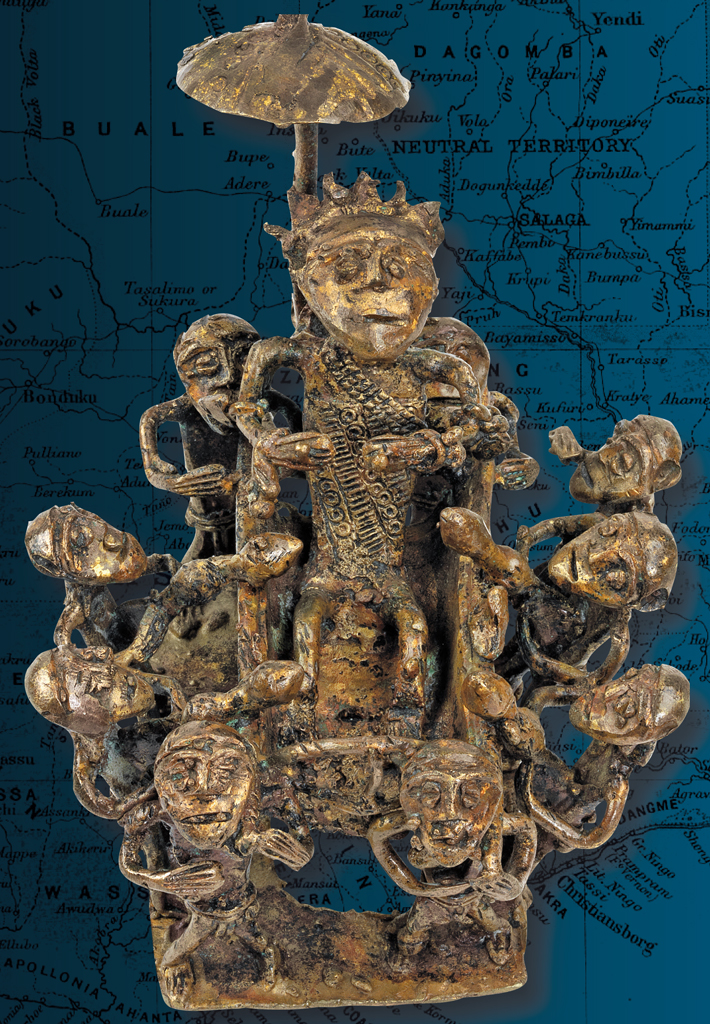
Museum Object Number(s): 77-9-2
BETWEEN THE 9TH AND 16TH CENTURIES, desert-traversing trade routes connecting Egypt, Ethiopia, Arabia, and Europe to sub-Saharan Africa carried ivory, salt, spices, and gold among kingdoms and cultures. In the forested region that is today modern Ghana, gold was plentiful and relatively easy to extract from the environment. It was here that the Akan-speaking peoples, made up of several populations that shared a language and many cultural elements, established a gold market so rich that the region was given the moniker “the Gold Coast.”
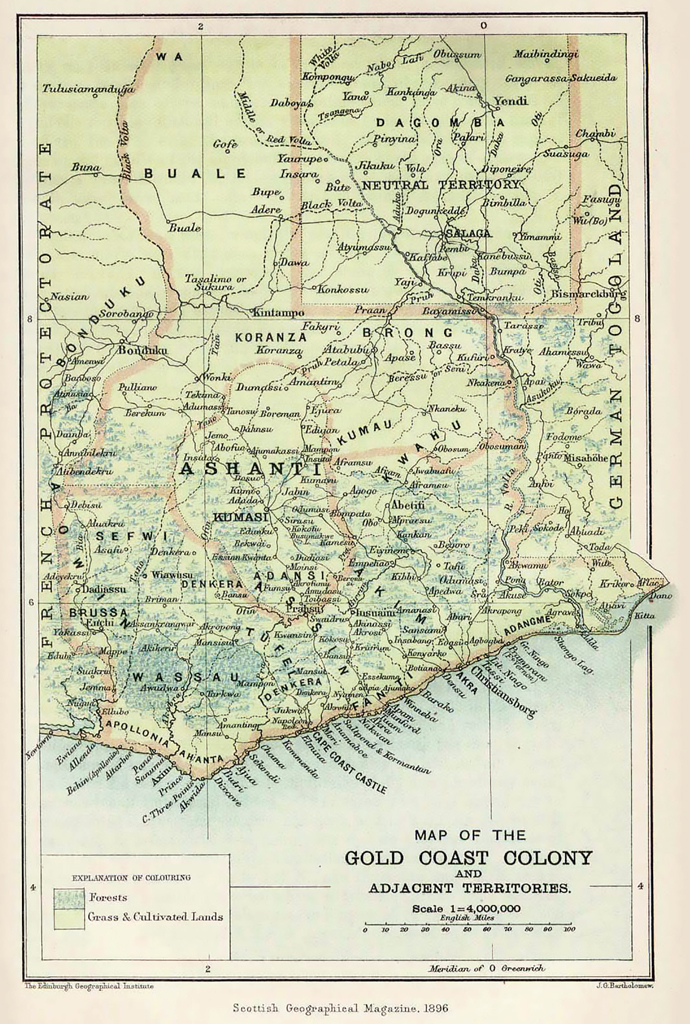
Valuable as both a commodity and as currency, gold dust was used as a medium of exchange. The Dyula, Sudanese people whose merchants began trading with the Akan in the late 14th century, are credited with introducing Islamic designs and a weight system based on Islamic units. Long before metalworking techniques were developed, the Akan used tropical seeds on which to base their system of weights. Over time, a complex system of standardized measures was used to conduct transactions. By the 14th century, goldsmiths in the region were manufacturing their own weights, scoops, scales, and boxes for storing gold dust to facilitate trade.
The Asante, also known as Ashanti, are an ethnic group among the Akan that utilized their gold wealth to build an empire. Organized in 1670, the Asante embarked on a military campaign to rule the surrounding states under a centralized government and judiciary system. It is their kingdom that the Penn Museum’s gold weight collection represents.
The term “gold” weight is a bit of a misnomer. While they are used to measure gold dust and nuggets, they are actually cast from brass. There are two primary ways the Asante produced their brass objects. In direct casting, a mold made from clay would be formed around the object meant to be copied. The object itself would then burn away when the mold was fired, leaving the void for the molten metal to be poured into. To make a great variety of original designs and complex objects, casters employed the “lost wax” method. For this, a mold is made by first sculpting an original, finely detailed piece out of wax, clay, or resin, which is coated by either dipping in or painting on layers of clay slip (a liquefied clay mixture with the consistency of cream) to ensure that all the elements of the sculpture are captured. Clay is packed around the mold and then is set to dry. Placed in a furnace, the wax is drained away and the mold is now ready to be filled with molten brass.
Some weights have additional nuggets of brass attached to them or holes drilled into them. The goldsmith had to judge the amount of molten metal required to make specific weights and, if incorrect, could add small amounts of metal or take away metal to meet a lower or higher weight standard without losing the completed work.
There were over 60 values used by the Akan that are as small as .04 grams. Each population center used local names for the measures, but the weight standards between regions were the same. The earliest weight systems used the Islamic standard, as Europeans did not arrive until the Portuguese landed in 1482. Because of the extent of global trade, by the 19th century, Islamic, Portuguese, and troy standards were combined together in the standard weight system. Gold dust was the primary currency of the region by the middle of the 18th century until paper currency based on the British pound was introduced in 1899.

Museum Object Number(s): AF2398A / AF2398B
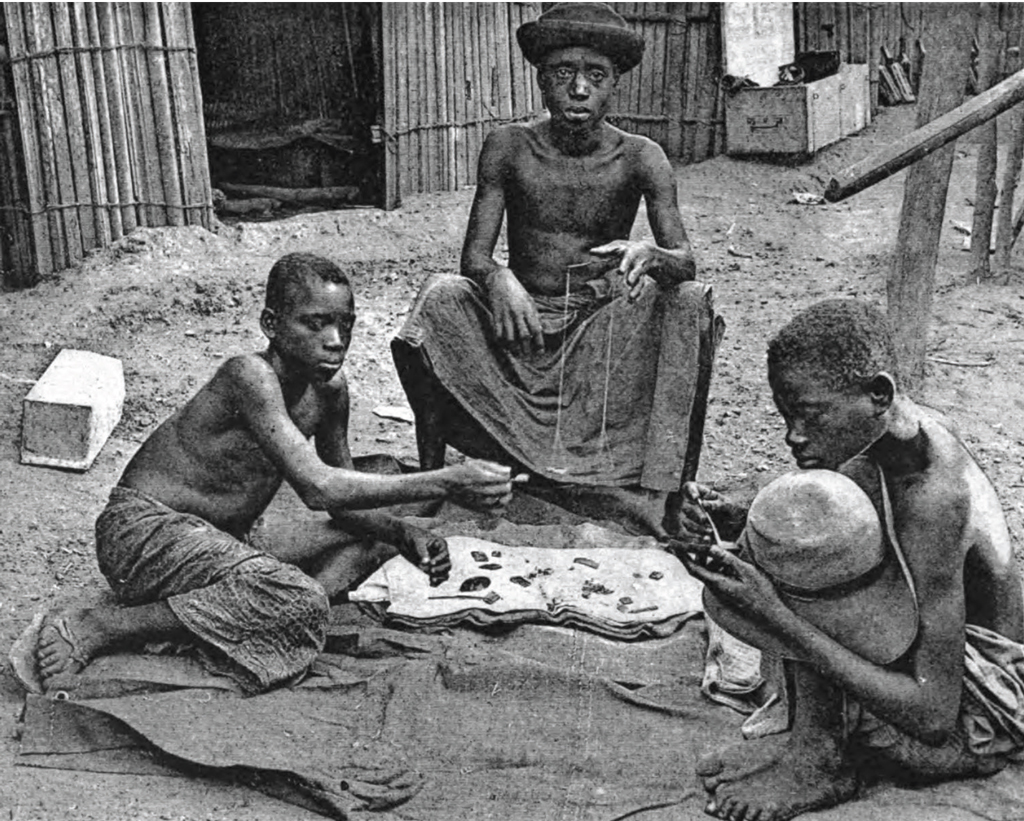
Handling gold dust is a delicate skill, and boys would begin practicing using miniature weights and scales. Most adult men owned a set of weights, often inherited from previous generations. The value of each individual weight was known by its owner, even in sets that included over a hundred weights. The wealthier and more powerful traders and chiefs would have sets of weights greater in number, units of measurement, and artistic flair. Depending on the size of the set, gold weights were stored in a special container such as a bag or a chest.
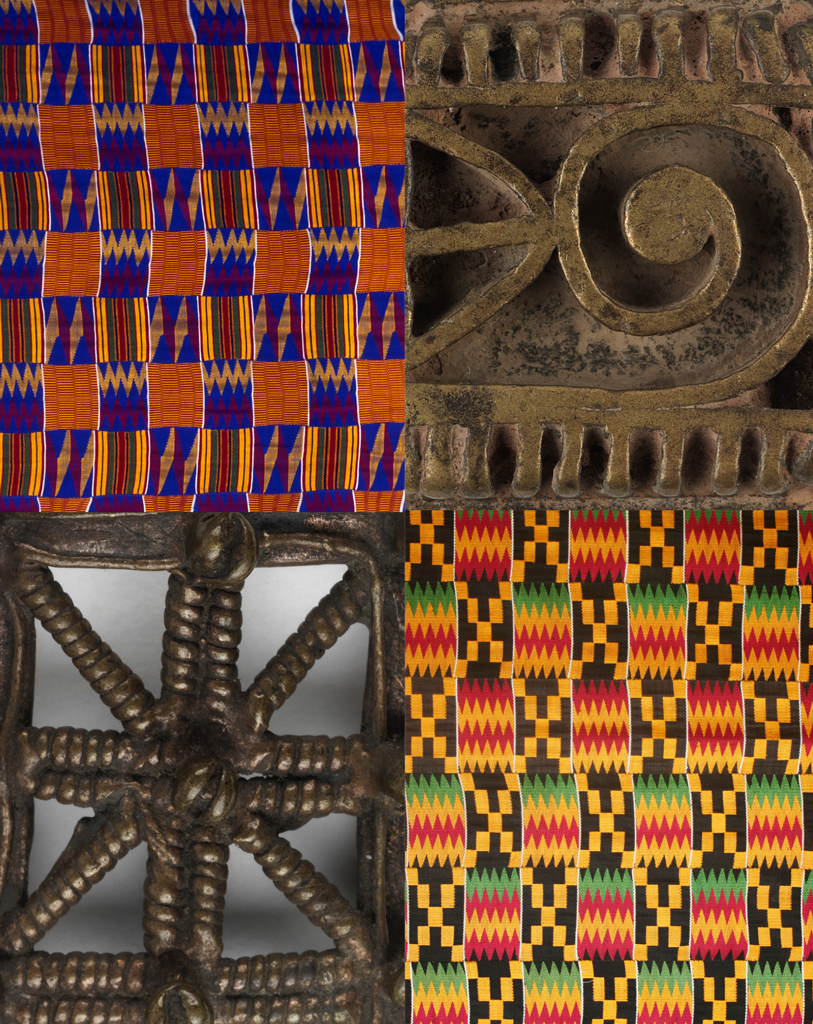
Museum Object Number(s): AF2531A / AF2672
Because the gold weights have not been excavated in archaeological contexts, dating their development is largely speculative. It is generally believed that the abstract and geometric designs are the earliest weights, influenced by Islamic culture brought by the first trans-Saharan traders. Much of Islamic art avoids representations of living beings in part due to the prohibition of idolatry. Many of the design motifs used in the geometric gold weights are also found in Akan textiles and on wall and home decorations. The geometric patterns became more complex over time, adding spirals and waves and even stylized representations of human figures and animals.
Figurative weights are representative of everyday objects such as shoes, tools, knives, or rope, and animate objects like animals and people. These are presumed to have been adopted soon after geometric designs.
Natural objects like seed pods were once used to measure gold dust, and their brass counterparts were likely direct castings. Interestingly, the representations of animals are all of undomesticated creatures that would not live in a village. It is believed that the symbolism of the weights as balanced and impartial is so important that the inclusion of animals that have a relationship with people for food or labor would hinder the fairness of the transaction.
Human figures are depicted in activities like hunting or ritual practice and are often identified through details in dress and hair as a specific social status or ethnicity. Figures that depict Europeans became common in the early 18th century. Firearms were heavily traded by the middle of the 17th century and were represented alongside other weapons in gold weight sets from that period on.
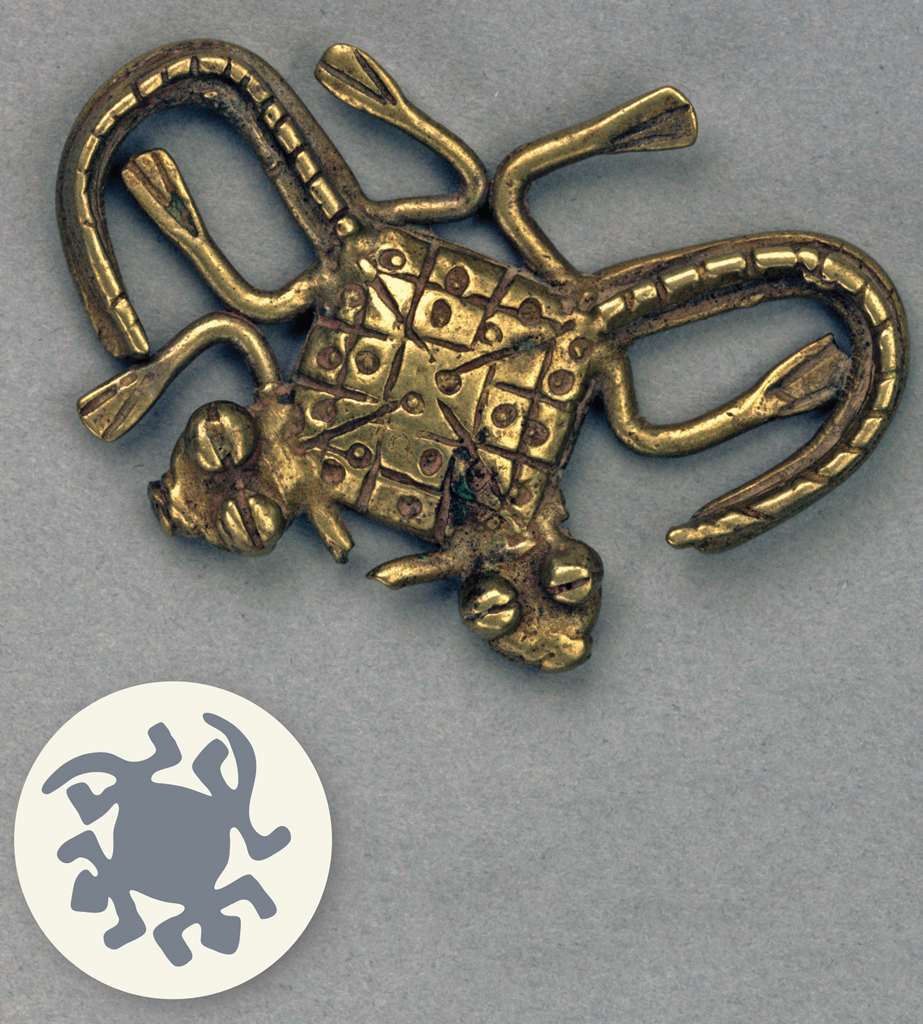
Museum Object Number(s): AF2422
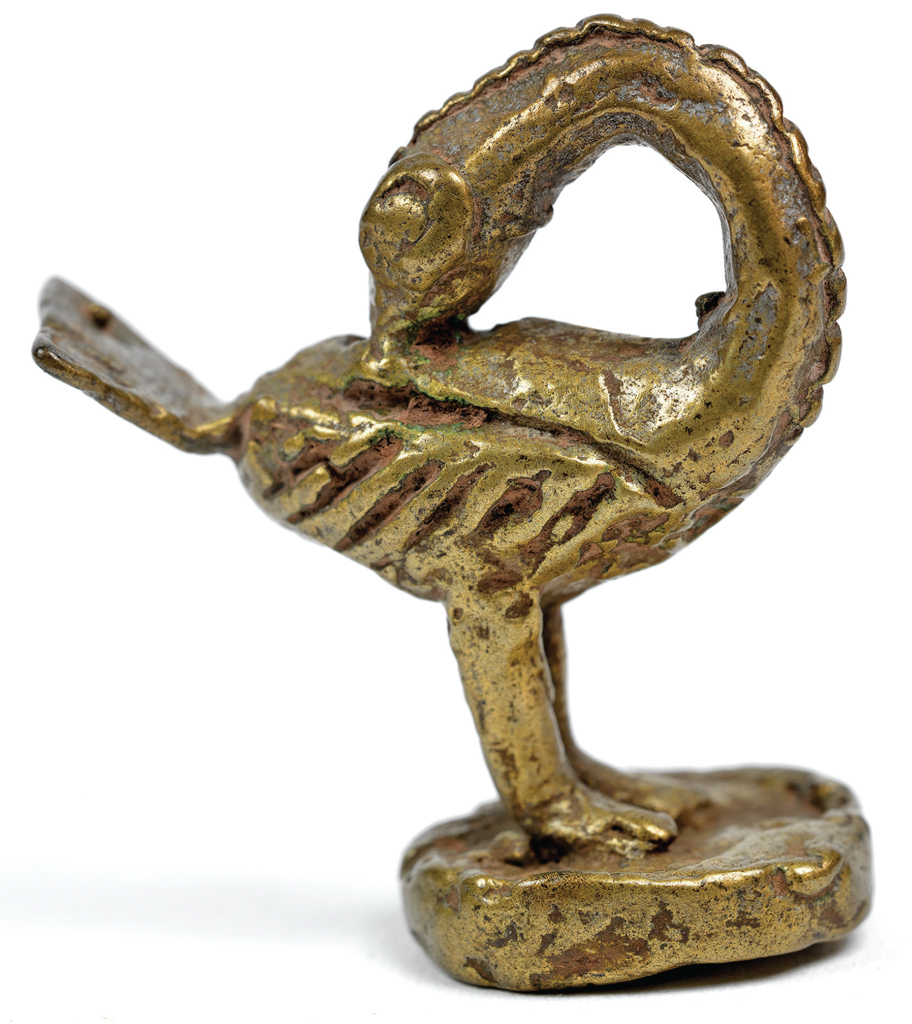
Museum Object Number(s): AF2458
The gold weights serve more than a functional or artistic purpose: they are representative of cultural norms, standards, and ideals. The figures include references to proverbs, myths, and histories of the Asante people. They represent a practical tool used every day in economic activity but created in unique artistic forms that exhibit the personality and culture of the metalsmiths and merchants who created and used them. Scholars can observe changes in iconography in weight sets that reflect the influences on the Akan people’s culture and document changing trends in style. In this way they are valuable for their artistic and cultural significance as well as their economic function. There is nothing quite like them in use today.
Christina Griffith is Associate Editor of Expedition.
For Further Reading
Crownover, D. and W. Kohler. “Gold Beads from the Gold Coast.” Expedition 15.3: 25–29 (1973).
Garrard, T.F. “Studies in Akan Goldweights (III): The Weight Names.” Transactions of the Historical Society of Ghana, 14.1: 1–16 (1973).
Sheales, F. African Gold-Weights in the British Museum. Online Research Catalogue. https://www.britishmuseum.org/research/online_research_ catalogues/agw/african_gold-weights/origins_and_history.aspx
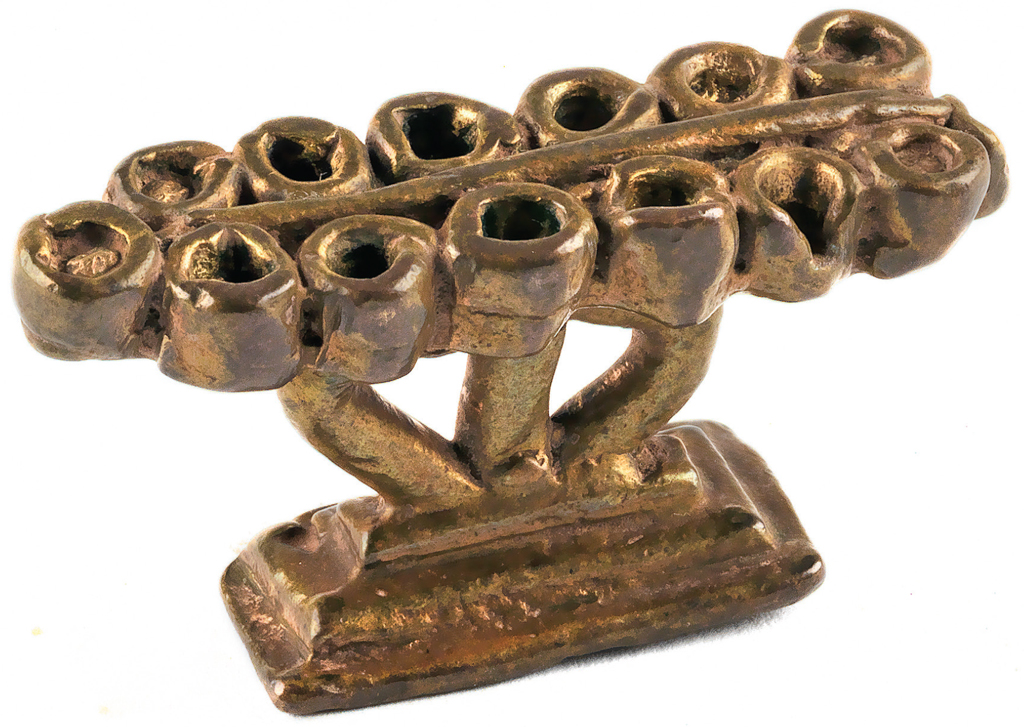
Museum Object Number(s): AF2480
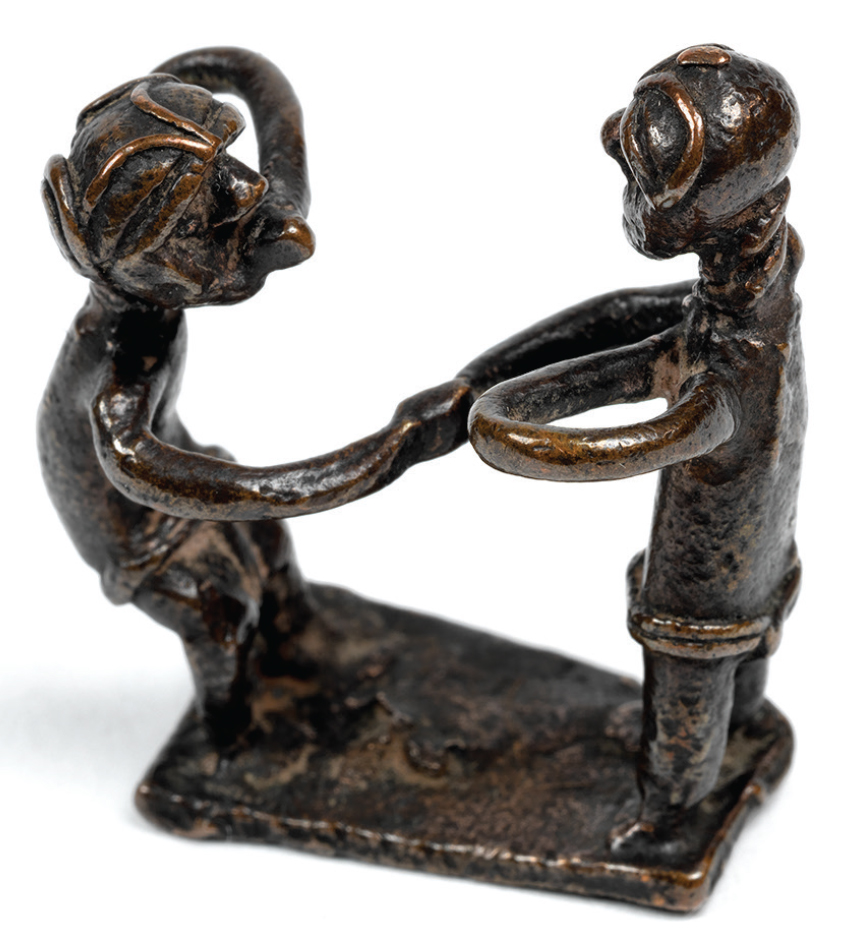
Museum Object Number(s): AF2444
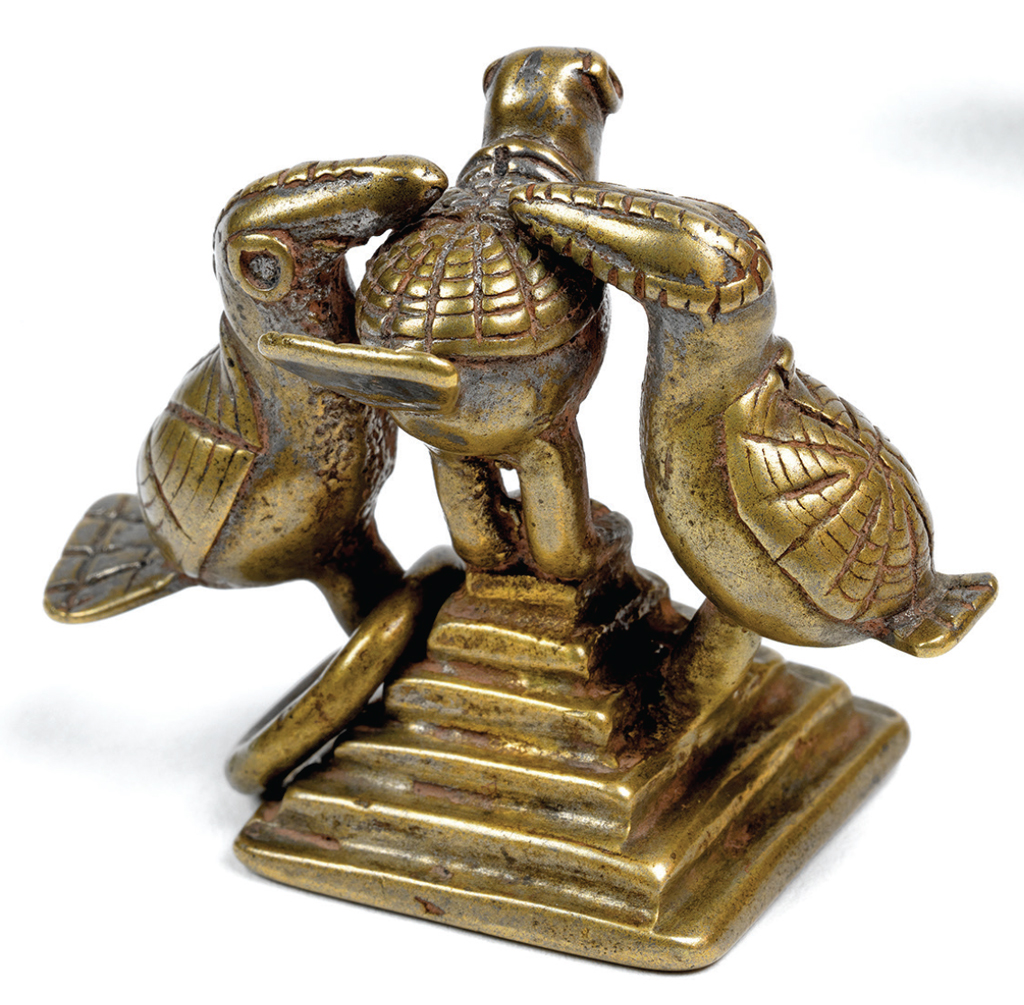
Museum Object Number(s): AF2121
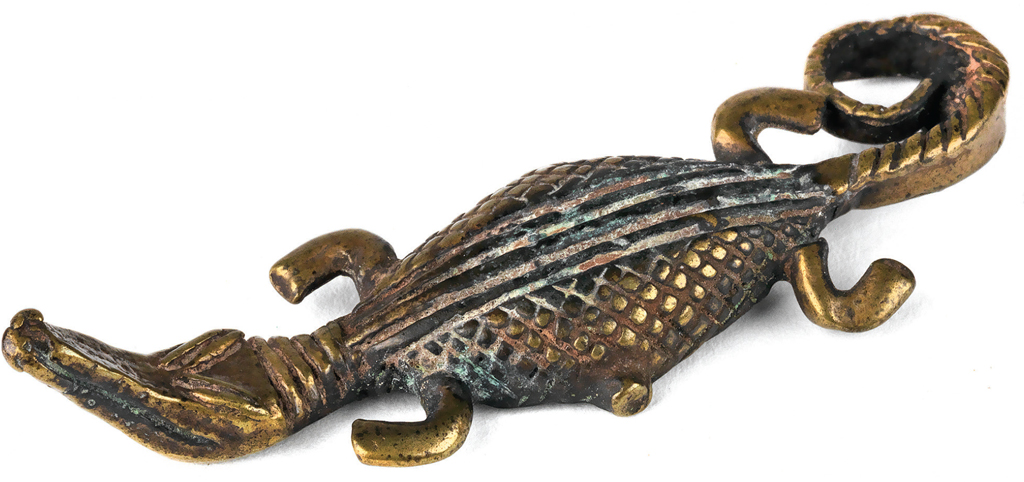
Museum Object Number(s): AF2421A

